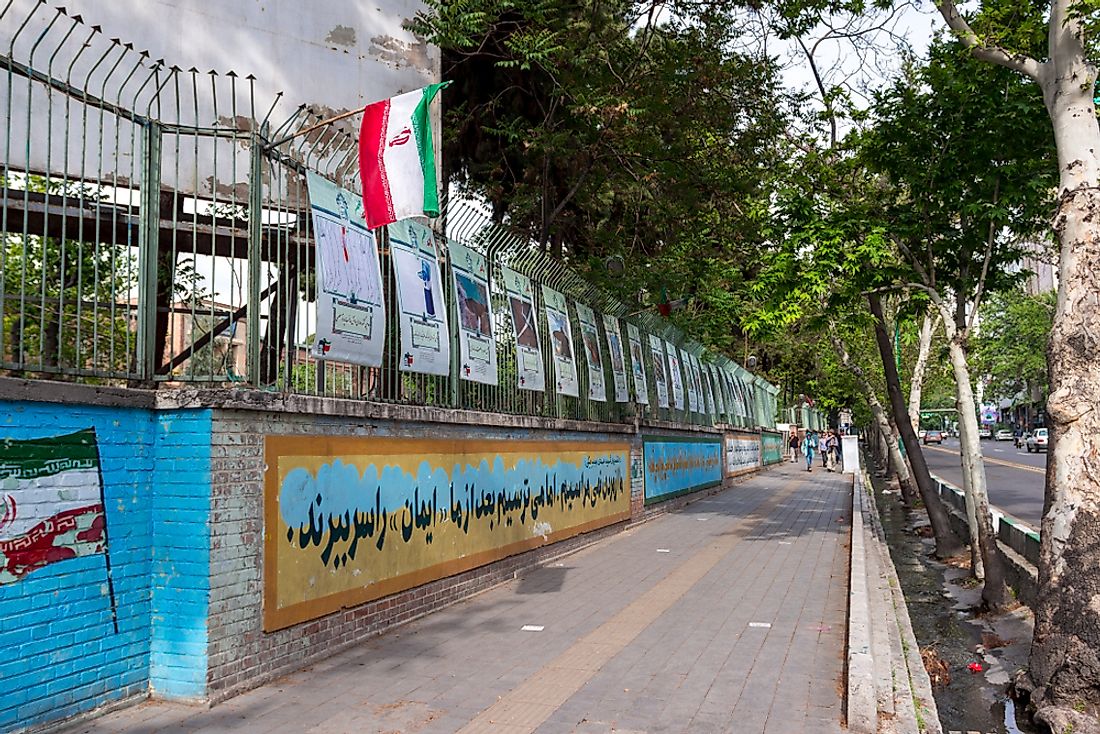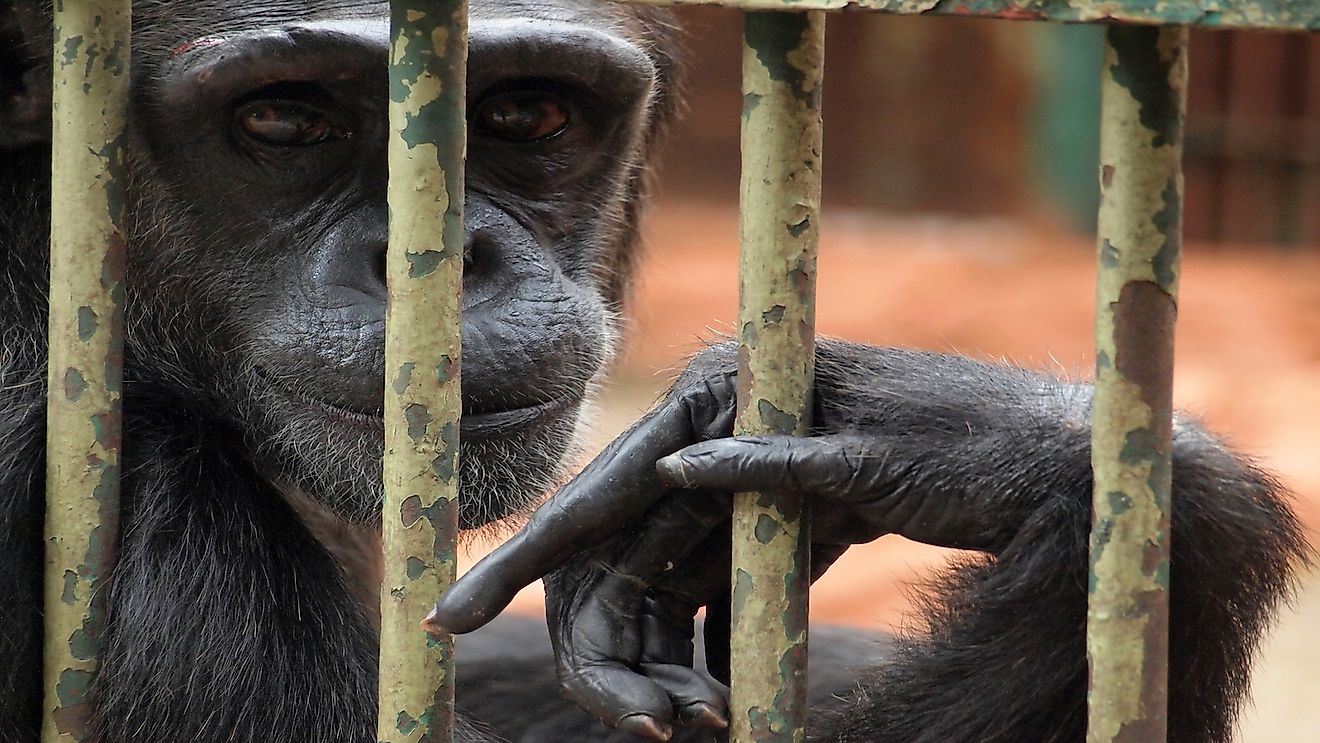What Was the Iran Hostage Crisis?

The Iran hostage crisis refers to a diplomatic situation between Iran and the United States that lasted for 444 days between November 4, 1979, and January 20, 1981. A group of college students from Iran stormed the US Embassy in the capital of Iran (Tehran) and captured 66 American citizens and diplomats. The students were part of the Muslim Student Followers of the Imam's Line who were strong supporters of the Iranian Revolution.
In the US, the incident received strong criticism from the media and President Jimmy Carter. Words such as “blackmail” and “entanglement” were commonly used in describing the incident. In Iran, the crisis had massive support as it was perceived as a movement that went against the US influence in Iran – in particular, the US influence in sabotaging the Iranian Revolution and supporting the abusive rule by Mohammad Reza Pahlavi (the last Shah of Iran).
Things got even worse once the Shah was overthrown and admitted in the US with cancer. Against Iran’s demands, the US refused to hand over the deposed Shah to stand for his crimes. In turn, Iran interpreted the refusal as a sure sign that the US was also complicit in the Shah’s crimes. Eventually, when all sorts of negotiations failed, President Carter was forced to turn to the military to save the hostages. The rescue mission led to the deaths of nine people (one Iranian and eight Americans) and turned out to be a failure.
The ineffectiveness of President Carter’s mission is said to have contributed to his defeat in the 1980 elections. The hostages were released just minutes into President Ronald Reagan’s first term after the Algiers Accords were made official. Ties between the two nations went downhill from there as the US imposed economic sanctions on Iran. Meanwhile, in Iran, the situation reinforced the status of Ayatollah Ruhollah Khomeini.
Background of the Conflict
The Iran Hostage Crisis’ roots go as far back as the period of World War II when Britain was allied with the Soviet Union. The two powers wanted to force monarch Reza Shah Pahlavi (father to Mohammad Reza Pahlavi) to give up the throne in favor of Mohammed. The Allies were concerned that Reza Shah would ally with Nazi Germany even though Reza had made a declaration of neutrality. However, the ruler of the oil-rich nation also prevented the Allies from using Iran as a supply route for troops. Due to its strategic position, the Allies had no choice but to invade Iran. The invasion forced Reza Shah to abdicate the throne in 1941.
When Mohammed took the throne, he was soon engaged in power struggles with the prime minister in the 1950s. Eventually, in 1953, the UK and the US helped Mohammed (through spy agencies) by deposing the prime minister in a mission called Operation Ajax. After that, the Shah extended his power and named himself an absolute monarch instead of the previous constitutional monarch.
In the US, on New Year's Eve 1977, months before the start ofthe Iranian Revolution, President Carter made a public toast endorsing the Shah. The toast was not received well in Iran by the people. All this anger culminated in the Iranian Revolution, which saw the deposition of the Shah in February 1979 after Ayatollah Ruhollah Khomeini returned from France. The Shah had exiled Ayatollah Khomeini for 15 years.
After the embassy was taken, the Carter administration made contact with the de facto administration in Iran with the hope of stabilizing the situation. Things took a turn for the worse in October 1979 after the Shah was allowed entry into the US to receive treatment for lymphoma. The State Department was against the permit although influential figures such as the then Secretary of State Henry Kissinger swayed the decision.
Naturally, relations between the US and Iran went sour with rumors emerging in Iran of a possible coup by the US to install the Shah in power once again. Khomeini took advantage of the rumors to further spread the message against the US or the “Great Satan” as he called the nation. It is important to note that there were no American plots as a later study revealed although evidence of spies was revealed.
Aside from getting rid of what they believed to be American sabotage, the hostage-takers also wanted to get rid of the de facto government established by Prime Minister Mehdi Bazargan. They believed that the provisional government did not intend to support the revolution. Lastly, they wanted to use the crisis to get the Shah back to stand trial for his rule.
The Planning and the Attack
The Iranians made the first attempt to take the embassy on February 14, 1979. On that day, members of the Organization of Iranian People's Fedai Guerrillas captured the US embassy and took one hostage. To save lives, Ambassador William Sullivangave up the embassy to the attackers although the US had control again within three hours with help from Iranian Foreign Minister Ebrahim Yazdi. The hostage, a marine called Kenneth Kraus, was tortured, tried, and was set to be executed. However, President Carter and Ambassador Sullivan moved quick and got him freed in less than a week.
The next attempt, which led to the crisis, was planned by Ebrahim Asgharzadeh, who was still in university at the time. The second attack was slated for September 1979. After much debate over whether to storm the US or the Soviet Embassy, Ebrahim and his group (also students) settled for the US. In later interviews, the group only wished to capture the embassy for a maximum of one week and detain a few people. By doing that, they were hoping to have their voice heard all over the world.
Before the attack, the students did an extensive reconnaissance of the embassy and monitored the procedures of the guards from rooftops. They also had help from the guard police officers and the Islamic Revolutionary Guards. In addition, they drew heavily on the first time the embassy was captured. The group did not inform Ayatollah Khomeini after Ayatollah Mohammad Mousavi Khoeiniha convinced them not to.
On November 4, 1979, the conspirators joined a demonstration outside the embassy. When they saw that the guards were unwilling to use deadly force against the demonstrators, the original plan of taking the embassy for a few days changed. The change of plans was also motivated by the large crowd that gathered outside to cheer them on. The group captured many embassy workers and marines then bound them up and paraded them for the cameras. Six Americans escaped the embassy and sought shelter in the British Embassy. The Canadians organized an operation called the Canadian Caper to smuggle out the diplomats.
Hostage Conditions
On camera, the students who captured the embassy stated that the hostages were guests who were treated humanely and respectfully. Ebrahim described the initial plan as nonviolent and symbolic to show the world how much Iran was offended.
However, the accounts of the hostages showed that things were far from what the students were insisting. Several of them complained of mistreatments such as beatings, theft, solitary confinement, execution threats, and others. Some of the hostage-takers included the hostages in games of Russian roulette.
February 5, 1980, was a particularly bad day as the guards roused and then blindfolded the victims, and led them to other rooms. The victims were stripped, searched, and finally told to kneel with their hands up. By the victims’ accounts, the guards were ready to execute them only for it to turn out to be a joke. Those who attempted to escape were punished through solitary confiments.
Rescue Missions
Before the hostages were released, the US made a first attempt at rescuing the hostages using the military. The mission was approved despite objections by the then United States Secretary of State, Cyrus Vance. The first attempt, called Operation Eagle Claw, was a failure that was eventually made public.
Accepting responsibility for the failure, President Carter’s popularity dipped considerably, which contributed to his defeat while seeking the second term. Meanwhile, in Iran, Khomeini used the attempt to claim that God intervened on behalf of Iran. Conversely, Khomeini’s popularity increased dramatically in Iran.
There were plans for a second rescue attempt although the operation was never implemented. In hindsight, the failed attempt destroyed any chances of saving the hostages through similar means. The hostage-takers distributed the hostages to different confinement zones thus eliminating any chances of rescuing all of them in one attempt.
Release
Less than an hour after President Reagan was sworn in after defeating Carter in the 1980 elections, the hostages were released after lengthy negotiations. This was on January 20, 1981. Due to the help of the Algerian government in the negotiation, the hostages were flown out of Iran to the US through Algeria. Ten days after their release, the hostages got a ticker-tape parade in New York City through the Canyon of Heroes.
Aftermath
The crisis worsened relations between the US and Iran to the point where the two countries were outright enemies and cut off all diplomatic ties. This was why the US aided Iraq after Iran pushed back Iraq’s invasion. Unsurprisingly, the US’s decision to aid Iraq was not popular in Iran.
In addition, Iran lost plenty as the negotiation that saw to the release of the hostages favored the US. In fact, none of Iran’s original demands were met. However, Khomeini and his supporters gained plenty as they solidified their positions. In addition, the intelligence recovered from the embassy helped Khomeini to root out US informants. To this day, Iran celebrates that event yearly by demonstrating and burning an Americanflag at the embassy.
The hostages and their families tried suing the Iranian government in 2000 although their attempt failed. The judge ruled that the initial agreement for the hostages’ release ruled out any hope of compensation. Further, the case could have led to other international diplomatic problems.
Conspiracy Theories
To this day, people are still unclear as tojust why the hostages were released just after Reagan was sworn in. Some conspiracy theorists argue that the Reagan government delayed the released although it has not been proven. According to the theorists, some of the key individuals who delayed the release included William Casey (CIA director) and maybe George Bush (the Vice President).











